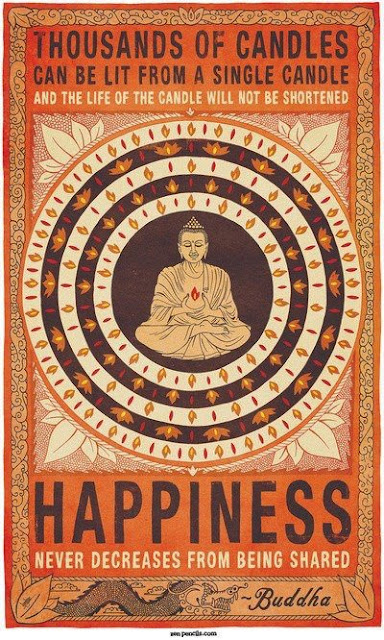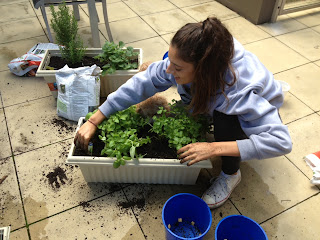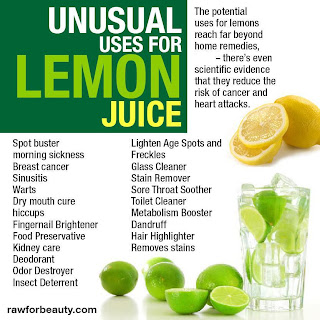Tuesday 19 February 2013
Yoga and Longevity
A great video which gives insight into the correlation between yoga and longevity. It inspires me to practice yoga more regularly!
Sunday 17 February 2013
Hippies in the City
I'm absolutely loving this book titled Hippies in the City by Rita Balshaw. It's an incredible guide for insightful nutritional advice, recipes, lifestyle tips, skincare suggestions and much more. It also has fundamentals on how to create change in your physical and emotional health. The layout of the book makes it extremely easy to read, its straight to the point and alternates different notions in health to maintain constant interest.
Even if you read a few pages every now and then (this is unlikely as you wont want to put it down) it has an abundance of tips well worth knowing!
Even if you read a few pages every now and then (this is unlikely as you wont want to put it down) it has an abundance of tips well worth knowing!
Saturday 16 February 2013
Roast Tomato and Capsicum Soup
The other day I made a delicious roast tomato and capsicum soup. Tomatoes are high in antioxidants, vitamin A,C, K, potassium and iron. This is similar for capsicums which contain vitamins A and C. Vitamin A is important for healthy skin, boosts the immune system and aids in night blindness (great for me)!
Makes about 4 medium servings
*note: you will need a blender or hand blender
Ingredients:
- 9 medium tomatoes
- 3 medium capsicums
- 2 handfuls of basil (I love basil, you may want to reduce this slightly)
- 1/2 handful of oregano
- 3 cups water
- 2 vegetable stocks
- olive oil
- balsamic vinegar
- salt
- pepper
1. Set oven to 180 degrees, put water and stock into a pot on the stove on medium heat
2. Quarter tomatoes, take out seeds/watery bit
3. Quarter capsicum, take out seeds
4. Put tomatoes and capsicums on a tray with foil
5. Drizzle olive oil and balsamic, sprinkle salt and pepper. Roast for half an hour (or until slightly roasted/soft)
6. Put roasted tomatoes and capsicums into the pot and blend with a hand blender
7. Once most ingredients are blended add herbs and continue blending until desired consistency
Garnish with fresh basil
Soy: to have or not to have?
Below is an excellent article written by a revered health blogger, Jessica Ainscough, who can be found at www.thewellnesswarrior.com.au.
There is no food quite as controversial as soy. There are those who claim that soy is good for everyone, helps prevent breast cancer and is the ideal alternative to dairy. Then there are the studies that show that soy is downright evil suppressing thyroid function, messing with our hormones and acting as a potent carcinogenic. So, who are we to believe? I’ve given this topic quite a bit of thought and have come to the conclusion that consuming soy is detrimental to our health. While I’ve never been a fan of tofu, there are certain soy products out there that I love (I went through a phase of being addicted to tofu veggie burgers). However, as much as I would love to believe that soy really is good for us, I cannot ignore the strong, blatant evidence proving the contrary. Another reason I would love to believe that soy is healthy is that it is found in almost everything – from baby formula and burgers to all processed foods. If you eat processed foods, you literally can’t get away from it. It doesn’t even have to be stated on the ingredients label!
The deception and conspiracy surrounding soy runs deep. Those that continue to reap profit from the ridiculously lucrative soy industry go to any measures to see that negative facts that do make their way into public knowledge are immediately quashed. It has been said that the disturbing tale of fraud, corporate irresponsibility, greed, bad science, public and media manipulation, corruption, intimidation, suppression, legal manoeuvring, regulatory inaction and government incompetence makes the tobacco companies look like good guys. If you’re interested in hearing this frightening story, I recommend picking up a copy of The Whole Soy Story by Kaayla T. Daniel, PhD. It’s quite thorough and complex, so I am just going to give you a small taster into the dangers of soy. Hundreds of epidemiological, clinical and laboratory studies link soy to: malnutrition, digestive distress, thyroid dysfunction, cognitive decline, reproductive disorders, infertility, birth defects, immune system breakdown, heart disease and cancer.
Here is a summary of soy’s most glaring problems, according to Dr Joseph Mercola:
1. 91 percent of soy is genetically modified (GM):
The genetic modification is done to impart resistance to the toxic herbicide Roundup. While this is meant to increase farming efficiency and provide you with less expensive soy, the downside is that your soy is loaded with this toxic pesticide. The plants also contain genes from bacteria that produce a protein that has never been part of the human food supply. GM soy has been linked to an increase in allergies. Disturbingly, the only published human feeding study on GM foods ever conducted verified that the gene inserted into GM soy transfers into the DNA of our gut bacteria and continues to function. This means that years after you stop eating GM soy, you may still have a potentially allergenic protein continuously being produced in your intestines. Even more frightening is the potential for GM soy to cause infertility in future generations, which has been evidenced by recent Russian research.
The genetic modification is done to impart resistance to the toxic herbicide Roundup. While this is meant to increase farming efficiency and provide you with less expensive soy, the downside is that your soy is loaded with this toxic pesticide. The plants also contain genes from bacteria that produce a protein that has never been part of the human food supply. GM soy has been linked to an increase in allergies. Disturbingly, the only published human feeding study on GM foods ever conducted verified that the gene inserted into GM soy transfers into the DNA of our gut bacteria and continues to function. This means that years after you stop eating GM soy, you may still have a potentially allergenic protein continuously being produced in your intestines. Even more frightening is the potential for GM soy to cause infertility in future generations, which has been evidenced by recent Russian research.
2. Soy contains natural toxins known as “anti-nutrients”:
Soy foods contain anti-nutritional factors such as saponins, soyatoxin, phytates, protease inhibitors, oxalates, goitrogens and estrogens. Some of these factors interfere with the enzymes you need to digest protein. While a small amount of anti-nutrients would not likely cause a problem, the amount of soy that many Westerners are now eating is extremely high.
Soy foods contain anti-nutritional factors such as saponins, soyatoxin, phytates, protease inhibitors, oxalates, goitrogens and estrogens. Some of these factors interfere with the enzymes you need to digest protein. While a small amount of anti-nutrients would not likely cause a problem, the amount of soy that many Westerners are now eating is extremely high.
3. Soy contains hemagglutinin:
Hemagglutinin is a clot-promoting substance that causes your red blood cells to clump together. These clumped cells are unable to properly absorb and distribute oxygen to your tissues.
Hemagglutinin is a clot-promoting substance that causes your red blood cells to clump together. These clumped cells are unable to properly absorb and distribute oxygen to your tissues.
4. Soy contains goitrogens:
Goitrogens are substances that block the synthesis of thyroid hormones and interfere with iodine metabolism, thereby interfering with your thyroid function.
Goitrogens are substances that block the synthesis of thyroid hormones and interfere with iodine metabolism, thereby interfering with your thyroid function.
5. Soy contains phytates:
Phytates (phytic acid) bind to metal ions, preventing the absorption of certain minerals, including calcium, magnesium, iron, and zinc – all of which are co-factors for optimal biochemistry in your body.
Phytates (phytic acid) bind to metal ions, preventing the absorption of certain minerals, including calcium, magnesium, iron, and zinc – all of which are co-factors for optimal biochemistry in your body.
6. Soy is loaded with the isoflavones genistein and daidzein:
Isoflavones are a type of phytoestrogen, which is a plant compound resembling human estrogen. These compounds mimic and sometimes block the hormone estrogen, and have been found to have adverse effects on various human tissues. Soy phytoestrogens are known to disrupt endocrine function, may cause infertility, and may promote breast cancer in women. Drinking even two glasses of soy milk daily for one month provides enough of these compounds to alter your menstrual cycle. Although the FDA regulates estrogen-containing products, no warnings exist on soy.
Isoflavones are a type of phytoestrogen, which is a plant compound resembling human estrogen. These compounds mimic and sometimes block the hormone estrogen, and have been found to have adverse effects on various human tissues. Soy phytoestrogens are known to disrupt endocrine function, may cause infertility, and may promote breast cancer in women. Drinking even two glasses of soy milk daily for one month provides enough of these compounds to alter your menstrual cycle. Although the FDA regulates estrogen-containing products, no warnings exist on soy.
7. Soy has toxic levels of aluminum and manganese:
Soybeans are processed (by acid washing) in aluminum tanks, which can leach high levels of aluminum into the final soy product. Soy formula has up to 80 times higher manganese than is found in human breast milk.
Soybeans are processed (by acid washing) in aluminum tanks, which can leach high levels of aluminum into the final soy product. Soy formula has up to 80 times higher manganese than is found in human breast milk.
8. Soy infant formula puts your baby’s health at risk:
Nearly 20 percent of U.S. infants are now fed soy formula, but the estrogens in soy can irreversibly harm your baby’s sexual development and reproductive health. Infants fed soy formula take in an estimated five birth control pills’ worth of estrogen every day. Infants fed soy formula have up to 20,000 times the amount of estrogen in circulation as those fed other formulas!
Nearly 20 percent of U.S. infants are now fed soy formula, but the estrogens in soy can irreversibly harm your baby’s sexual development and reproductive health. Infants fed soy formula take in an estimated five birth control pills’ worth of estrogen every day. Infants fed soy formula have up to 20,000 times the amount of estrogen in circulation as those fed other formulas!
There is also the issue of pesticides and genetic modification. Soy foods are both heavily sprayed with pesticides and genetically modified (GM). More than 80 percent of the soy grown in the United States is GM. And more than 90 percent of American soy crops are GM. Since the introduction of GM foods in 1996, we’ve had an upsurge in low birth weight babies, infertility, and other problems in the U.S. population, and animal studies thus far have shown devastating effects from consuming GM soy. You may want to steer clear of soy products for no other reason than a commitment to avoiding GM foods… unless you wish to be a lab animal for this massive uncontrolled experiment by the biotech industry.
What about the Asian argument?
We are constantly being sold that soy products are good for us because Asian folk have been thriving on them for centuries. You may be surprised to learn that Asians consume soy in tiny amounts – 7 to 8 grams per day – and most of this has been fermented for 3 to 5 years to remove the toxins. The fermentation process (applying to foods like tempeh) also reduces the growth depressants in soy products, but doesn’t remove them completely.
We are constantly being sold that soy products are good for us because Asian folk have been thriving on them for centuries. You may be surprised to learn that Asians consume soy in tiny amounts – 7 to 8 grams per day – and most of this has been fermented for 3 to 5 years to remove the toxins. The fermentation process (applying to foods like tempeh) also reduces the growth depressants in soy products, but doesn’t remove them completely.
The best way to eliminate soy from your diet is to avoid all processed foods and instead purchase whole foods that you prepare yourself.
What are your thoughts on soy? What conclusions do you come to from all the information out there?
Monday 4 February 2013
Is There Scientific Proof We Can Heal Ourselves?
An excellent Ted talk! I could watch these all day :)
http://www.youtube.com/watch?v=LWQfe__fNbs
http://www.youtube.com/watch?v=LWQfe__fNbs
I'm extremely excited about my new herb garden, it's something I've always wanted to do and finally got around to doing it. It was also much easier than I thought! Especially because the plants had already matured. Maybe next time I will start with the seeds and eventually I would love to grow fruit and veg too. How incredible it would be to eat food straight from your garden, for those of you that do already, I'm very envious!
Not only does a herb garden encourage you to get creative with your cooking, but you also have medicine in your backyard! If you have a sore stomach, why not make a fresh peppermint tea? if you have a cut or a burn lather some smoothing aloe vera for instant relief with its antibacterial and anti-inflammatory properties. I am especially fond of aloe vera and will dedicate a whole post to its array of benefits very soon!
Saturday 2 February 2013
The best thing to have as soon as you wake up is a cup of warm water (not hot as the heat kills the vitamins and minerals) with half a lemon and a tablespoon of apple cider vinegar to kick start your metabolism, cleanse your liver and alkalise the body! Add some ginger for supporting digestion and extra detoxification
Nothing better than a hot creamy chai! (with almond milk) :)

Spices are special. They are both culinary and medicinal and a chai tea is a perfect embodiment of the two. Who said drinking medicine couldn’t be pleasant? These are the medicinal properties of the spices you probably already have in your pantry…
Click here to learn how to make home made chai tea.
A tip for storing spices - in order to keep your spices fresh and flavoursome, store them in air-tight glass jars, in a dry place and away from direct sunlight.

Cardamom - Cardmamom is a great spice for digestive ailments. It helps to ease spasms, flatulence, indigestion and nausea. It can also help to stimulate the apetite.
 Cinnamon - Cinnamon is a great circulatory stimulant so good for warming up the blood and extremities. It regulates blood sugar levels that can assist in reducing sugar cravings and stabilising energy levels.
Cinnamon - Cinnamon is a great circulatory stimulant so good for warming up the blood and extremities. It regulates blood sugar levels that can assist in reducing sugar cravings and stabilising energy levels. Clove - A fabulous rememdy for toothaches, due to its numbing effect on the gums. It is a potent anti-fungal and anti-microbial and is great for mouth ulcers and infections infections. It is also a great digestive aid, helps to relieve cramps and flatulence.
Clove - A fabulous rememdy for toothaches, due to its numbing effect on the gums. It is a potent anti-fungal and anti-microbial and is great for mouth ulcers and infections infections. It is also a great digestive aid, helps to relieve cramps and flatulence.
Fennel - A wonderful ‘carminative’, meaning that is helps to ease cramping, bloating and flatulence. A lovely remedy to ease digestive complaints in children.
 Ginger - Another fabulous circulatory stimulant, incredibly effective for warming the extremities so it can be helpful for easing pain associated with rheumatic conditions such as rheumatoid arthritis. It is also a great anti-inflammatory and is wonderful at easing nausea, especially that associated with travel and morning sickness.
Ginger - Another fabulous circulatory stimulant, incredibly effective for warming the extremities so it can be helpful for easing pain associated with rheumatic conditions such as rheumatoid arthritis. It is also a great anti-inflammatory and is wonderful at easing nausea, especially that associated with travel and morning sickness.
Pepper - A circulatory and digestive stimulant, it aids in digestion, relieves abdominal cramps, eases diarrhoea and nausea.

Star Anise - An aromatic, helpful for relieving cramps, dispelling flatulence and easing digestive pain.
Reblogged from nataliethenaturopath on tumblr
Subscribe to:
Posts (Atom)











